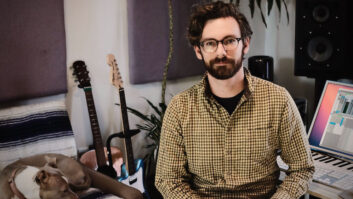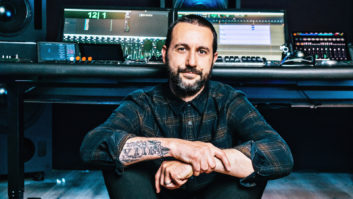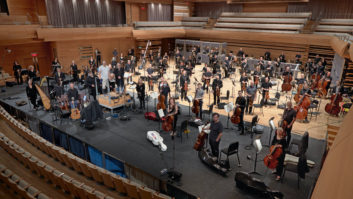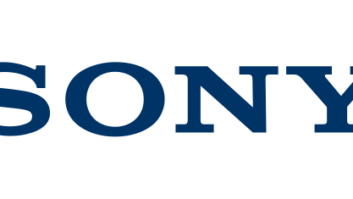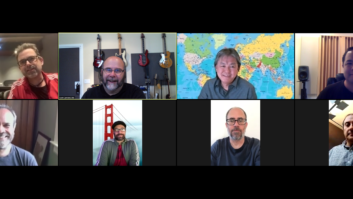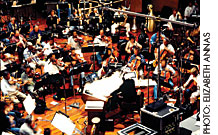
Multiple formats, mountains of preamps and converters, miles ofcable, a 96-input console and a 100-piece orchestra: These days,recording an orchestral score for a major motion picture often requiresan infinitely complicated setup — and a very skilled crew.Mix visited the Clint Eastwood Stage on the Warner Bros. lot inBurbank, Calif., one morning to observe the day-long setup required torecord the score by veteran composer Jerry Goldsmith for the animatedfeature Looney Tunes: Back in Action. Mixer Bruce Botnick headedup the session, with a team that included, from Warner Bros., GregDennen, recordist; Ryan Robinson and Peter Germanson, scoring technicalsupport; Rich Wheeler and Barry Fawcett, floor operations; and JamieOlvera, client services. Also on the stage were Pro Tools operatorsThomas Graham and Bob Bayless, and the team from DMT rentals: DougBotnick, Brad Cobb and Eric Cowden.

A Pro Tools rig, manned by “chief science officer” NickVidar, controlled playback of prerecorded tracks from Goldsmith’sGigaStudio and various synthesizers. Re-cording for the session was totwo DMT Pro Tools|HD systems. Both Goldsmith and Botnick prefer to gettheir mixes live: The first Pro Tools rig recorded the 11 channels oflive film mixes at 48 kHz/24-bit using dB Technologies converters. Thesecond DMT Super Pro Tools for the main multitrack format wasconfigured to record Botnick’s Neumann M 150 overall mics on its firsteight tracks at 192 kHz/24-bit, with the rest of the tracks recordingat 96 kHz/24-bit. Tracks 1 through 8 used outboard Pacific MicrosonicsAD/DA converters, and tracks 9 through 48 used Genex GXA8 A/D and dBTechnologies DA824 D/A converters. Recording as safety backups were aGenex 8500 MO deck in PCM mode to capture the 5.1 mix, plus a48-channel iZ Technology RADAR system. Additionally, the session wasrecorded in 1-bit DSD mode for a stereo SACD that is for an albumversion of the soundtrack through a pair of EMM Labs Meitner DesignDAC8 converters to Botnick’s DSD 8500, which also recorded for fullsurround and 44.1 CD formats.



